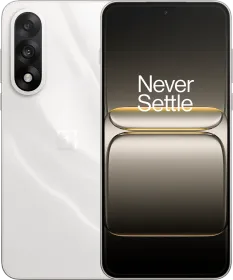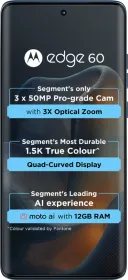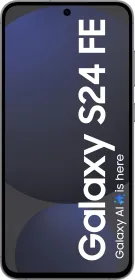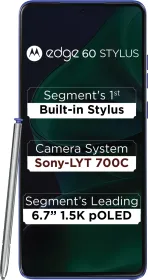There’s a very specific kind of disappointment when you press the Netflix button on a smart TV remote… and then wait. And wait some more to before you can use it. Circuit House Technologies – a company founded by Xiaomi and Flipkart veterans – claims to focus on solutions to address this very problem. With these concerns in mind, they launched their brand, Lumio, which is a combination of “lum” (from the Latin word “lumen,” meaning “light”) and “IO” (referring to input/output).
Hoping to challenge established premium brands like Samsung and LG while also challenging the value-focused strategies of Xiaomi, OnePlus, and other Chinese manufacturers that have dominated India’s mid-range TV market. Lumio launched its first two TVs: Vision 9 (55-inch) and Vision 7 (55-inch, 50-inch, and 43-inch).
Out of the three, we received the Lumio Vision 9 for review. In our long-term review, we’ll test whether the Lumio Vision 9’s performance claims hold up to real-world use over time, examine its display quality against established competitors, and determine if this Bengaluru startup has what it takes to challenge the big players in India’s smart TV market. Let’s get started:
Lumio Vision 9 LED Price & Availability
The Lumio Vision 9 Mini LED is available on Amazon. You can buy it for Rs 59,990. Amazon and Lumio occasionally offer bank card discounts on select cards. Be sure to keep an eye out to make it a much sweeter deal for you.
Lumio Vision 9 Review: Pros & Cons
Pros
- Smooth Google TV interface
- Snappy performance with no lag
- HDMI 2.1 ports
- Excellent HDR performance
- SDR Upsaling works well
- Excellent color reproduction
- Satisfactory audio
- TLDR content aggregation
Cons
- No 120Hz gaming
- Slight blooming
- Remote design
- Apple AirPlay missing
Lumio Vision 9 Review: Design & Build
When you first unbox the Lumio Vision 9 4K TV, you will notice that It doesn’t have some flashy, over-engineered design. Instead, it plays it straight — follows a regular script, but it plays it well. The Vision 9 is a thin-bezel 4K smart TV that strikes a fine balance between sleek and sturdy without tipping over into fragility. Compared to budget Android TVs or even mid-tier offerings from Vu or Hisense, the Vision 9’s design feels more refined and less compromised. It matches the build quality of Sony, Samsung, or LG TVs in terms of sales above the Lumio 9 price bracket.

The TV comes with stands bundled within the box, which follow an overall understated aesthetic. Frankly, that’s not a bad thing at all. This minimalist metal TV stand holds up a 55-inch display without making you nervous. It’s wide and stable, ensuring the TV stands tall in the living room without giving any fear.

The rear panel deserves a special mention — it’s clean, uncluttered, and genuinely organized. Port placement feels intentional, which is more than can be said for most budget TVs, where cable routing is an afterthought. Lumio clearly wants to earn points here, and for the most part, it does.
Overall, the Lumio Vision 9 boasts solid build quality in a mid-range 4K TV, distinguishing thoughtful design from checklist design.
Lumio Vision 9 Review: Connectivity, I/O & Remote
Ports shouldn’t be a pain. However, on-budget and mid-range smart TVs often have I/O ports that are hidden behind awkward panels, crammed into corners, or limited by space compromises. The Lumio Vision 9 features every port on the side, making them easily accessible even after the device is wall-mounted. You get three HDMI 2.1 ports with a full 48 Gbps bandwidth, featuring ALLM (Auto Low Latency Mode) for gaming and eARC (Enhanced Audio Return Channel) for high-bitrate audio pass-through. For gamers and home theatre enthusiasts, that’s not fluff — that’s a minimum necessity.

It’s a small win that becomes a big deal when you’re fumbling behind a 65-inch slab to plug in a soundbar or hard drive. Budget TVs from brands like Xiaomi or Kodak often skip or limit these features to a single port. Lumio gives you three.
Beyond HDMI, the lineup is loaded: 3 USB ports, LAN, optical audio, mini AV, headphone jack, and cable input. You also have dual Wi-Fi and Bluetooth 5.
Then there’s the remote — it looks goofy at first, but it nails the three things that matter: weight, feedback, and button layout. The gunmetal plastic feet give it a surprisingly premium feel. The buttons are clicky, well-spaced, and don’t feel like they came from a ₹5,000 TV. You get Google Assistant voice search, of course, but also a dedicated button for TLDR, Lumio’s first-party software feature — a rare move in this price segment.

Compared to the overly minimalist remotes from OnePlus or Realme TVs, which often sacrifice usability for looks, the Lumio remote is unapologetically practical. It won’t slide into your couch cushions, it won’t get lost in plain sight, and it doesn’t need a design award to justify its existence.
Lumio Vision 9 Review: Hardware and Software
The Circuit House team has ensured that they have not cut any corners with the selection of hardware for Vision 9. Lumio calls their “BOSS Processor” a Realtek chip, specifically the RTD2885M. Well, there’s nothing wrong with using a label like a BOSS processor as long as it justifies it with performance. More importantly, they’ve paired it with 3GB of DDR4 RAM and 32GB of storage, specifications that sound modest until you realize most sub-₹75,000 TVs are still shipping with only 1.5GB RAM.
That extra RAM means the Vision 9 can keep multiple streaming apps in memory simultaneously, switching between Netflix, Prime Video, and YouTube without the painful reload times that plague most Android TVs under Rs 1 lakh. The additional storage provides headroom for app updates and cached content, preventing the storage-related slowdowns that make older smart TVs feel progressively more sluggish over time.

The most impressive thing about Vision 9’s software experience isn’t any particular feature — it’s the complete absence of lag. The Google TV interface, optimized by Google engineers, responds immediately to remote inputs, scrolls smoothly through content carousels, and handles multitasking between apps with ease.
Most Android TVs in this price range that I have experienced have felt sluggish, and I struggle to keep up when navigating the menus or browsing content. Most Android TVs in this price range tend to pause awkwardly. The Vision 9 just… works, which is high praise indeed for budget Android TV hardware.

The interface itself is clean, Google TV with Chromecast built-in for seamless screen mirroring. There’s no bloatware, no intrusive ads on the home screen, and no weird custom Android skin that makes everything feel unfamiliar.
Lumio has added its TL;DR (Too Long, Didn’t Read) app, which also features a dedicated remote button and promises quick content discovery across live sports and music. It gives daily recommendations tailored to your taste. It gives you genre-based hit lists for every mood. You can search YouTube Music and even play saved playlists from YouTube Music, as well as more.
The concept makes sense: instead of endlessly scrolling through streaming service recommendations, have a single app that surfaces what’s actually worth watching right now.
Whether TL;DR delivers on this promise in the long term will depend on Lumio’s ability to maintain fresh, relevant content curation — something that requires ongoing investment and editorial judgment, not just algorithmic aggregation.
Overall, the Vision 9 isn’t just fast for a budget Android TV – it makes expensive TVs look sluggish, app switching happens without the usual Android TV stutter, and the Google TV interface responds like it’s running on flagship smartphone hardware rather than budget TV silicon.
Lumio Vision 9 Review: Picture Quality
The Vision 9’s Mini LED panel punches well above its weight. It features an IPS LCD panel with 1920 mini LEDs and 160 dimming zones, providing high-end hardware at a mid-range price. The TV’s peak brightness reaches a solid 900 nits, and in Movie Mode, it covers 111% of the DCI-P3 and 81% of the BT.2020 color gamut. These are specs you usually only hear when LG or Samsung boast about their flagship TVs.

When I tested this TV, the results largely supported the promise. Dolby Vision and HDR10 content from Top Gun: Maverick to Our Planet looks genuinely impressive. There are details and clarity in clouds and nuance in skin tones that make you double-check the price tag.

Color gradation is smooth, and saturation doesn’t veer into oversaturated territory, even during Netflix’s stylized scenes. SDR content, such as Friends or The Big Bang Theory, upscales cleanly, with no weird skin tones or jagged text, which is more than we can say for many Android TVs in this price range. Most content appears genuinely impressive, and the mini-LED backlighting offers improved contrast over standard LCD panels, although it doesn’t quite match the inky blacks of OLED displays.


Vision 9 has its limitations, and they are most noticeable in dark scenes. Despite local dimming, blacks never quite go black — especially in SDR content. A slight bluish tint creeps into shadows, and in HDR, it sometimes crushes details, making darker skin tones or low-light shots feel flatter than they should.

Dark SDR scenes develop a noticeable bluish tint, while HDR content crushes black details in a way that makes dark skin tones appear unnatural. Blooming artifacts become visible in dark viewing environments, particularly when viewed from certain angles. What matters is that the Vision 9 provides flagship-level color and brightness, strong Dolby Vision support, and surprisingly competent upscaling — all without falling into the usual Android TV performance issues.
Lumio Vision 9 Review: Gaming
The Vision 9 comes with HDMI 2.1 support with ALLM (Auto Low Latency Mode), which automatically switches to the TV’s lowest-latency mode when gaming content is detected. It’s not a dedicated gaming TV with 120Hz refresh rates or variable refresh rate support, but for console gaming at 60 frames per second, it performs competently.
The input lag feels sufficient for casual gaming, and the ALLM switching works reliably with PlayStation and Xbox consoles. The 4K upscaling handles lower-resolution gaming content reasonably well, and HDR gaming provides the kind of visual pop that makes supported titles look genuinely impressive.
Lumio Vision 9 Review: Audio
The Vision 9’s audio system deserves particular praise as it sounds good for TV speakers. The 24W quad-speaker setup (two tweeters plus two full-range drivers) benefits from large 800mL acoustic cavities that provide more internal volume than typical flat-panel TVs. The result is audio that feels refined rather than tinny, with clear dialogue reproduction and a surprisingly wide soundstage for music content.
Dolby Atmos and Dolby Audio support provide spatial audio processing, though the physical speaker arrangement obviously can’t match dedicated soundbar setups. Still, this is one of the better-built-in speaker systems in this price range, capable of filling medium-sized rooms without immediately requiring external audio upgrades.
Lumio Vision 9 FAQs:
Q: Is the Lumio Vision good for gaming?
A: Yes. It supports 4K 60Hz and VRR. It makes for a good TV for casual viewing.
Q: Does it support Dolby Vision?
A: Yes, including Dolby Vision gaming on supported platforms.
Q: How many HDMI 2.1 ports does it have?
A: Yes, 3 HDMIs support HDMI 2.1 features.
Q: Is Lumio 9 good for a dark room?
A: OLED still has better-viewing angles, but the Lumio Vision 9, with 900 nits of peak brightness and 160 dimming zones, performs well even in a dark room.
Review Verdict: Should You Buy the Lumio Vision 9?
The Lumio Vision 9 is more than a budget TV — it’s a proof-of-concept that a new Indian brand can challenge the established giants on their turf. It gets the basics right — fast UI, a great panel, and solid audio — while also delivering thoughtful extras like HDMI 2.1, TL;DR content curation, and proper RAM and storage specs.
Is it perfect? No. Dark scene performance is not on par with OLED-grade or high-end LCD competitors (which cost more than twice as much as Lumio), and gaming framerate support is limited to 60Hz. But at ₹59,990, it’s punching way above its weight. If you’re looking for the best smart TV under ₹60,000 with Mini LED, the Lumio Vision 9 absolutely deserves a spot on your shortlist.

Smartprix ⭐ Rating: 8 out of 10
- Design and Build: 8/10
- SDR Performance: 8/10
- HDR Performance: 8/10
- Upscaling: 8/10
- Gaming: 9/10
- Audio: 8/10
- Software: 8/10
- Remote: 7/10
First reviewed in June 2025.


































